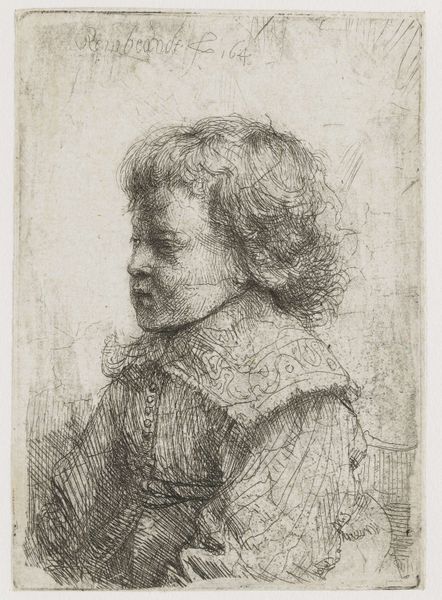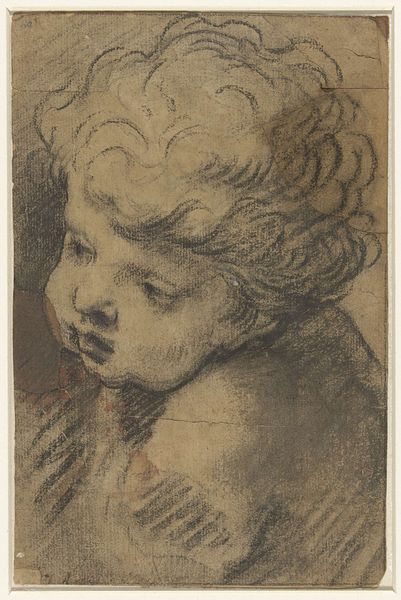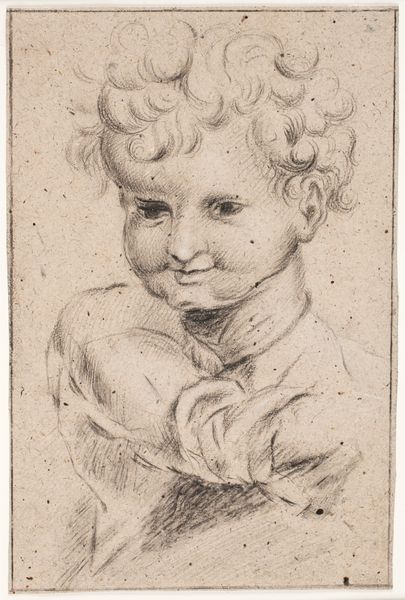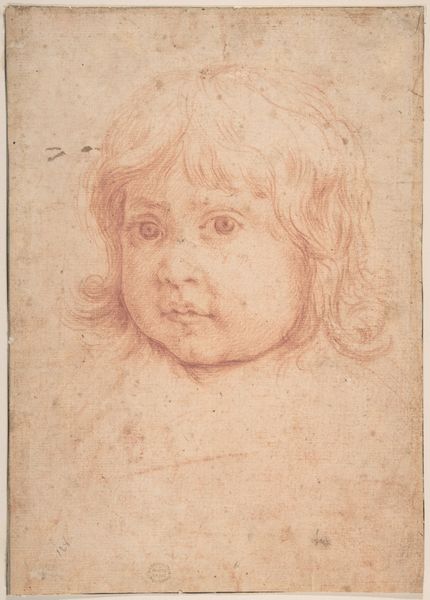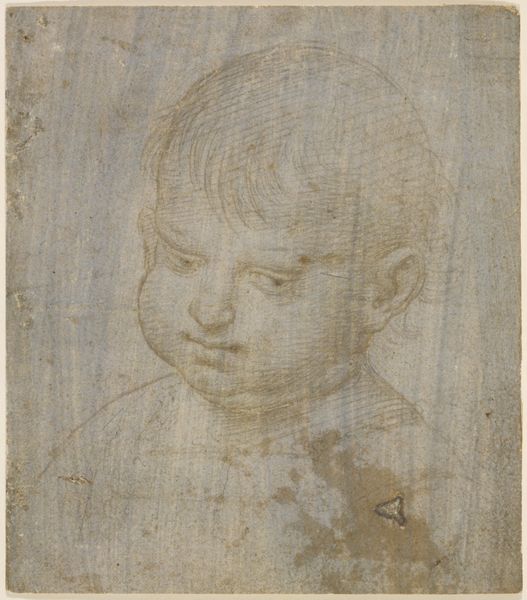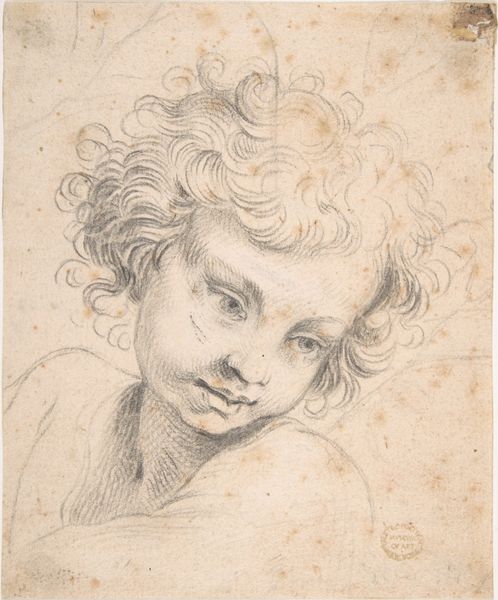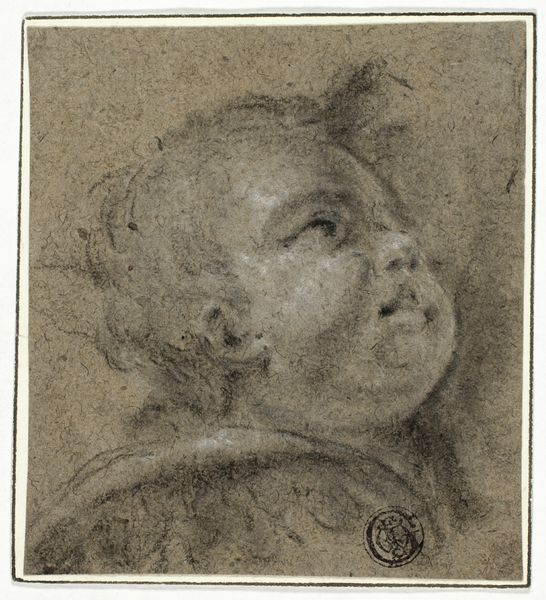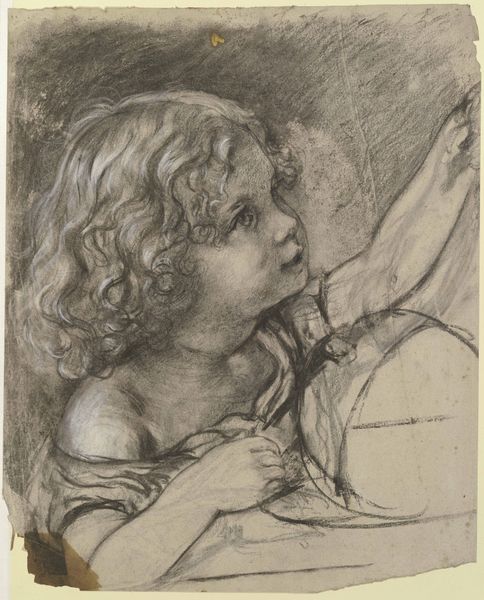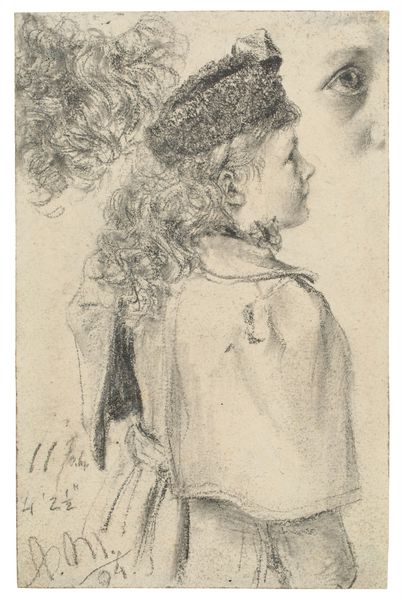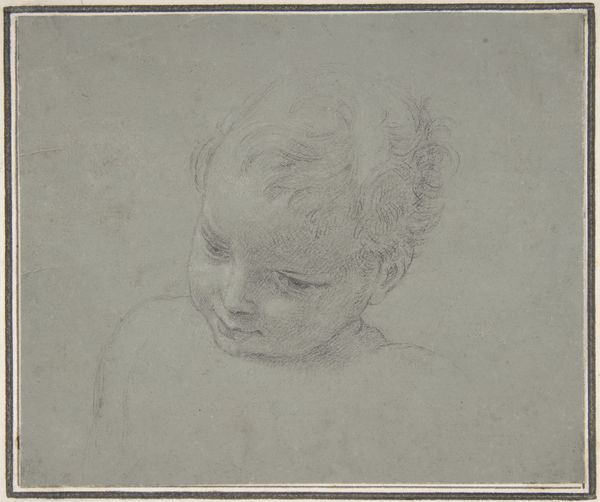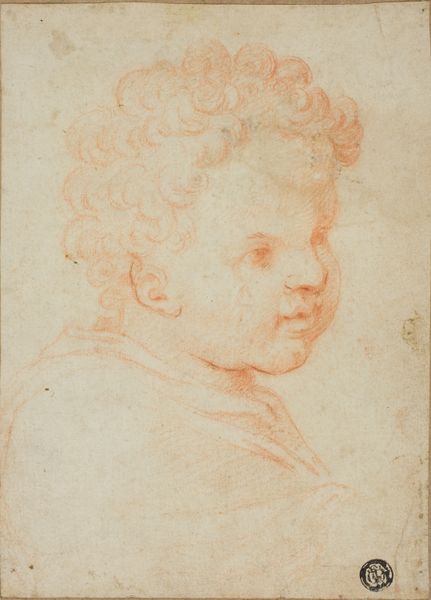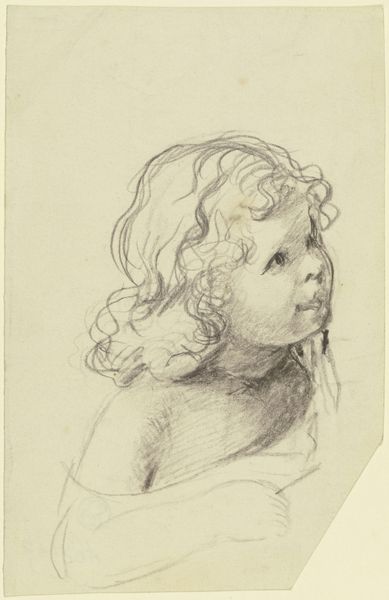
drawing, print, paper, ink, engraving
#
portrait
#
drawing
#
baroque
#
dutch-golden-age
# print
#
paper
#
ink
#
pencil drawing
#
engraving
Dimensions: 188 mm (height) x 158 mm (width) (plademaal)
Curator: Standing before us, we have Rembrandt van Rijn's "Portrait of a Boy, in Profile," dating back to 1641. It's an engraving rendered in ink on paper, held at the SMK in Copenhagen. Editor: My first thought is quiet melancholy, you know? He’s caught in this liminal space, a boy but dressed… so formally. There's almost a haunting delicacy to those etched lines. Curator: Indeed, Rembrandt was a master of etching. Examining his process reveals much; notice the density of lines to create shadows and form. The material—ink and paper—belies the complex social structure embedding portraiture production. Editor: Yes, and what social performance *is* this child enacting, right? Dressed up with this incredible lace collar, so starched-looking… Is he comfortable, is he playing dress-up? I get such a performative feeling from him. Curator: Absolutely. The context of the Dutch Golden Age is key here. Rising merchant classes commissioned portraits as a means of asserting status. Children became important vehicles to visualize that societal ascent and lineage. Editor: Lineage! It strikes me, looking closely, how incredibly mature his gaze is. All this fine etching making a child who looks like they know things. Things maybe a child shouldn't? And he knows *he* is being observed for future "productivity." Curator: Rembrandt's economy within means, the controlled marks and his tonal range with only line and space; consider that the etching plates demanded time and money to produce. Printmaking enabled Rembrandt to broadly distribute his artistry—while navigating market dynamics and workshop models in 17th-century Amsterdam. Editor: You make me think that the actual labor in creating the artwork has its impact in what the "narrative" of this kid becomes in history, an artifact in itself of both his childhood *and* Rembrandt’s studio. Something both tender and unsettling in that. Curator: Precisely. Seeing both the artist and his era in this portrait is crucial for contextual understanding. Editor: Thinking of Rembrandt through the image itself... I might have looked at him in galleries differently had I stopped to remember portraits involve *real* children whose realities intersected directly with artistic and socioeconomic circumstances. Curator: A poignant way to consider its place in our collection.
Comments
No comments
Be the first to comment and join the conversation on the ultimate creative platform.
